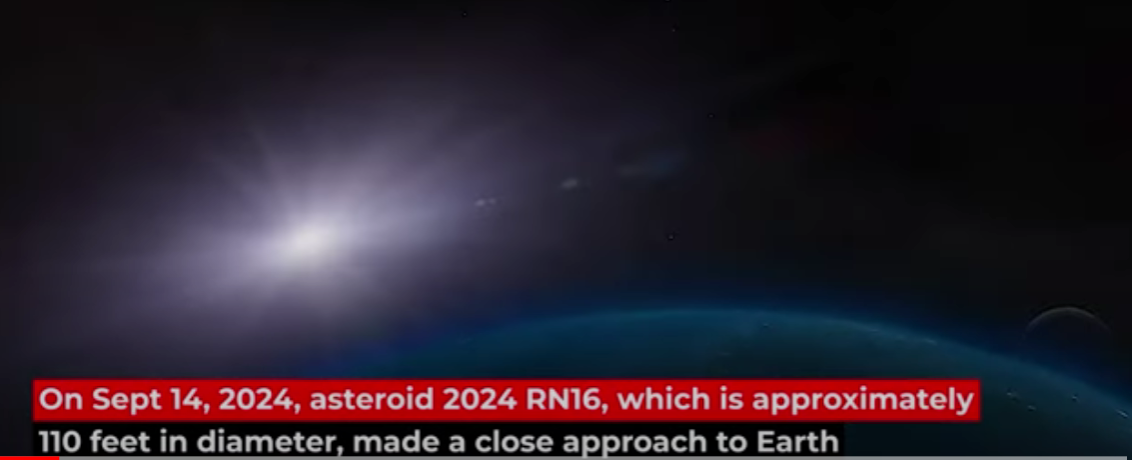At 08:46 UTC (2:16 PM IST) on September 14, 2024, the asteroid 2024 RN16 will pass incredibly close to Earth, approaching within 1.6 million kilometers of our planet. This space rock is a member of the Apollo group of near-Earth objects, with a width of around 110 feet and a speed of 104,761 kilometers per hour. These asteroids are in close proximity to Earth because their orbits intersect the course of the Sun.
The Apollo asteroids are named for Apollo, the first asteroid in this group to be found in 1862. Because these asteroids’ orbits cross Earth’s, there is a chance that they will collide, which is why NASA keeps a close eye on them.
If a space rock like 2024 RN16 were to hit Earth, the impact would be catastrophic. It’s estimated that if it entered our atmosphere, it could explode about 29 kilometers above the ground, releasing energy equivalent to 16 megatons of TNT. This explosion would create a significant shockwave but wouldn’t impact the ground directly. Such events are expected to occur approximately every 990 years. Thankfully, 2024 RN16 is set to glide past Earth without posing any threat to our planet.
In order to determine the risk of an impact, NASA’s Center for Near-Earth Object Studies (CNEOS) monitors comets and asteroids. Trajectories of these objects are tracked with the use of observations from observatories and amateur astronomers throughout the world. While programs like Pan-STARRS and NEOWISE provide detailed observations, the Minor Planet Center gathers this data. Refinement of asteroid trajectories is aided by planetary radar systems such as the Goldstone Solar System Radar.
“With NASA’s vigilant monitoring, Earth is safe from threats posed by space rocks like 2024 RN16,” a NASA representative assured.

**ISRO’s Vigilance: Asteroid Apophis and Future Threats**
https://en.wikipedia.org/wiki/ISRO
The asteroid Apophis, which is anticipated to pass quite close to Earth on April 13, 2029, is another object under close observation by the Indian Space Research Organization (ISRO). Apophis, named after the Egyptian god of chaos, is larger than both the Narendra Modi Stadium in Ahmedabad and the Indian aircraft carrier INS Vikramaditya.
The goal of SRO’s recently established planetary defense domain is to defend Earth from outside attacks. ISRO Chairman Dr. S. Somnath emphasized in a recent interview with NDTV that a major asteroid collision presents a genuine existential threat to civilization. ISRO is well aware of this possibility, and we are keeping a careful eye on Apophis through our Space Objects Tracking and Analysis (NETRA) network. Since there is only one Earth, India will work with other countries to avert such dangers in the future.
Apophis was discovered in 2004 and is periodically monitored as it gets closer to Earth. It will pass 32,000 kilometers closer in 2029 than a lot of geostationary satellites. Even though science suggests that Apophis may not impact Earth, its near approach nevertheless causes a great deal of anxiety. Potential risks are highlighted by historical asteroid impacts, such as the one that formed the Lonar Crater Lake in Maharashtra 500,000 years ago.
“ISRO will certainly study Apophis closely during its closest approach in 2029,” Dr. Somnath continued. Missions to investigate and potentially reroute Apophis are also being planned by international space agencies. Apophis is the target of NASA’s OSIRIS-REx mission, which recently returned samples from another asteroid. In cooperation with India, the European Space Agency is considering launching the Rapid Apophis Mission (RAMSES) in 2028.
Watch this space as international space agencies collaborate to protect Earth from interstellar threats.https://www.jpl.nasa.gov/asteroid-watch